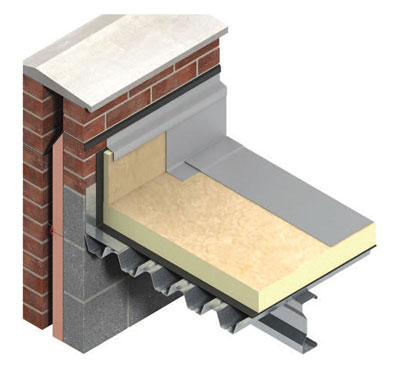Flat Roof Insulation
- Home
- Our Services
- Flat Roof Insulation

How flat roofs are insulated
When an insulated roof is built from new, the insulation layer can be included at different levels within the structure. The roof may be described as “warm deck” or “cold deck” depending on whether the insulation is above or below the main solid roof layer.
Adding insulation to an existing flat roof generally requires the removal and replacement of some of the existing structure. It is not normally possible to spray or blow insulation into an existing void or attach insulation to the underside. It is also important to carry out any insulation work in a way that minimises any risk of condensation building up within the roof structure over time.
Flat roof insulation is most often carried out when some part of the roof needs to be replaced for other reasons – for example, when the weatherproof layer has started to leak. However, it is possible to insulate a flat roof at any time, in which case it may be possible to replace the weatherproof layer at the same time to avoid problems in the future.
Flat roof insulation is used to enable a room to feel warmer in the winter and cooler in the summer months
f you’re seeking a reduction in energy usage (and your energy bills), warm flat roof insulation will work best for you. It’ll also improve your property’s Energy Performance Certificate and help to reduce condensation. Cold flat roofing has a much lower installation cost and is well suited to outbuildings, which don’t necessarily require all the benefits of warm flat roof insulation.
The simple answer is yes, there are building regulations that must be adhered to. The latest flat roof insulation amendment came in 2010 in the form of Approved Document L. U-values are measured in Watts/metres squared Kelvin and the document stipulates a U-value target of 0.18W/m2K for new or replacement flat roofs. The idea behind this is that more insulation should provide better heat retention, which will lower bills and help meet the CO2 emission reduction EU directive.
Insulation materials tend to be extremely robust. You can expect flat roof insulation to last anywhere between 25 and 40 years.

